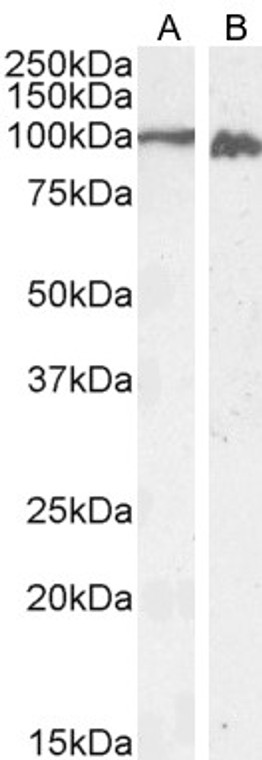| Host: |
Goat |
| Applications: |
Pep-ELISA/WB/IHC/IF |
| Reactivity: |
Human/Mouse/Rat/Dog/Pig/Cow |
| Note: |
STRICTLY FOR FURTHER SCIENTIFIC RESEARCH USE ONLY (RUO). MUST NOT TO BE USED IN DIAGNOSTIC OR THERAPEUTIC APPLICATIONS. |
| Short Description: |
Goat polyclonal antibody anti-Calnexin (Internal) is suitable for use in ELISA, Western Blot, Immunohistochemistry and Immunofluorescence research applications. |
| Clonality: |
Polyclonal |
| Conjugation: |
Unconjugated |
| Isotype: |
IgG |
| Formulation: |
0.5 mg/ml in Tris saline, 0.02% sodium azide, pH7.3 with 0.5% bovine serum albumin. NA |
| Purification: |
Purified from goat serum by ammonium sulphate precipitation followed by antigen affinity chromatography using the immunizing peptide. |
| Concentration: |
0.5 mg/mL |
| Dilution Range: |
IHC-5µg/mlIF-Strong expression of the protein seen in the endoplasmic reticulum (ER) of NIH3T3 cells. 10µg/mlELISA-antibody detection limit dilution 1:128000. |
| Storage Instruction: |
Store at-20°C on receipt and minimise freeze-thaw cycles. |
| Gene Symbol: |
CANX |
| Gene ID: |
821 |
| Uniprot ID: |
CALX_HUMAN |
| Immunogen Region: |
Internal |
| Accession Number: |
NP_001737.1 |
| Specificity: |
Reported variants represent identical protein (NP_001019820.1, NP_001737.1). |
| Immunogen Sequence: |
SKTPELNLDQFHDKT |
| Function | Calcium-binding protein that interacts with newly synthesized monoglucosylated glycoproteins in the endoplasmic reticulum. It may act in assisting protein assembly and/or in the retention within the ER of unassembled protein subunits. It seems to play a major role in the quality control apparatus of the ER by the retention of incorrectly folded proteins. Associated with partial T-cell antigen receptor complexes that escape the ER of immature thymocytes, it may function as a signaling complex regulating thymocyte maturation. Additionally it may play a role in receptor-mediated endocytosis at the synapse. |
| Protein Name | CalnexinIp90Major Histocompatibility Complex Class I Antigen-Binding Protein P88P90 |
| Database Links | Reactome: R-HSA-168316Reactome: R-HSA-2132295Reactome: R-HSA-8984722Reactome: R-HSA-901042Reactome: R-HSA-9020956Reactome: R-HSA-9683686Reactome: R-HSA-9694548Reactome: R-HSA-983170 |
| Cellular Localisation | Endoplasmic Reticulum MembraneSingle-Pass Type I Membrane ProteinEndoplasmic ReticulumMelanosomeIdentified By Mass Spectrometry In Melanosome Fractions From Stage I To Stage IvThe Palmitoylated Form Preferentially Localizes To The Perinuclear Rough Er |
| Alternative Antibody Names | Anti-Calnexin antibodyAnti-Ip90 antibodyAnti-Major Histocompatibility Complex Class I Antigen-Binding Protein P88 antibodyAnti-P90 antibodyAnti-CANX antibody |
Information sourced from Uniprot.org
12 months for antibodies. 6 months for ELISA Kits. Please see website T&Cs for further guidance







